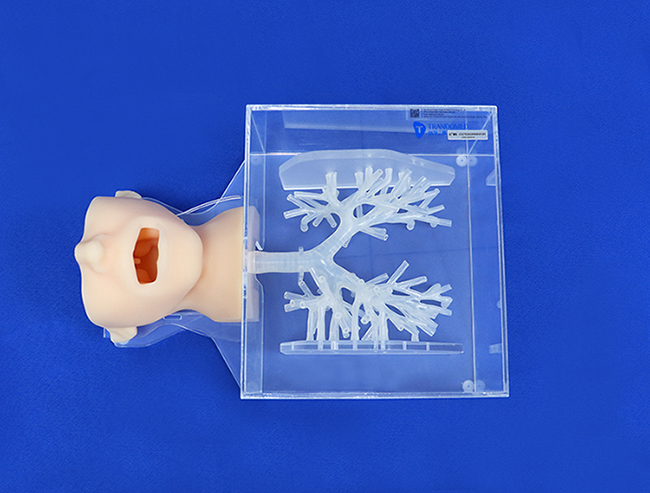What is endoscopic ultrasound (EUS)?
Endoscopic Ultrasound, the English name is Endoscopic Ultrasound, referred to as EUS, is a digestive tract examination technology that combines endoscopy and ultrasound. This technology places a miniature high-frequency ultrasound probe on the top of the endoscope. When the endoscope is inserted into the digestive tract, while the endoscope directly observes the lesions of the digestive tract, it uses ultrasound under the endoscope to scan the digestive tract and surrounding structures in real time.
What are the advantages of endoscopic ultrasound?
Endoscopic ultrasound gives full play to the dual advantages of endoscopy and ultrasound to obtain clearer and more comprehensive ultrasound images. Endoscopic ultrasound can obtain the histological characteristics of the hierarchical structure of the gastrointestinal tract and the ultrasound images of surrounding nearby organs. It can differentially diagnose the nature of gastrointestinal lesions, determine the depth and scope of invasion, and identify benign and malignant lesions.
With the popularization of endoscopic ultrasound (EUS) technology in clinical practice, its application is becoming more and more widespread, especially for the origin and depth of gastrointestinal tumors, preoperative staging of early gastrointestinal cancer , and reasonable grasp of the adaptability of minimally invasive endoscopic treatment. disease plays an important role.
Endoscopic ultrasound can be used for preoperative staging of esophageal cancer, gastric cancer, and colorectal cancer, and can more accurately diagnose early gastrointestinal cancer, determine the depth of tumor infiltration and the swelling of extramural lymph nodes , and is superior to abdominal CT and other images study.
Usually the digestive tract can be divided into 4 layers, from the inside to the outside, they are the mucosal layer, submucosal layer, muscular layer, and serosal layer. Since gastroscopy and colonoscopy use visible light imaging, only the uppermost layer of the digestive tract (mucosa) can be seen.
However, some lesions originate from the submucosal layer (including the submembranous layer, muscular layer, and serosal layer). At this time, ordinary gastrointestinal endoscopy cannot penetrate the mucosa to diagnose submucosal lesions; some lesions are located outside the gastric cavity and close to the gastric wall. , it is even more difficult to diagnose with ordinary gastroscopy.
Endoscopic ultrasound combines the functions of endoscopy and ultrasound to better observe and judge submucosal structures or lesions.
What are the applications of endoscopic ultrasound?
Endoscopic ultrasound can observe the tissue structure of each layer of the digestive tract wall and the ultrasound images of adjacent organs. Therefore, it is mainly used in the following aspects:
01.Diagnosis of submucosal lesions of the digestive tract
For raised lesions with intact surface mucosa, gastrointestinal endoscopy is often difficult to determine their origin and nature. Endoscopic ultrasound can not only distinguish whether the source is an intramural lesion or extraluminal compression, but can also preliminarily determine its nature based on the origin, internal echo, and relationship with surrounding tissues.
02.Staging of digestive tract tumors
Placing the probe on the surface of the tumor for scanning can determine the depth and scope of tumor infiltration, as well as its relationship with surrounding adjacent organs, as well as the invasion of surrounding blood vessels and lymph nodes, providing a basis for formulating treatment plans.
03.Diagnosis of gastrointestinal lymphoma
The levels of gastrointestinal lymphoma invasion are often relatively deep. Endoscopic ultrasound can observe the level of the lesion, measure the thickness of the affected tube wall, guide the location of deep excavation for biopsy, and observe the condition of surrounding lymph nodes.
04.Diagnosis of pancreatic diseases
Endoscopic ultrasound scans the pancreatic parenchyma, which can detect tiny lesions that cannot be found by B-ultrasound and CT. Endoscopic ultrasound-guided fine-needle aspiration biopsy (EUS-FNA) can also be performed on the lesion site. In addition to the tumor itself, scanning of surrounding lymph nodes and organs can assist in staging the disease.
05.Diagnosis of liver, bile duct and duodenal ampulla lesions
For patients with obstructive jaundice, scanning along the bile duct can accurately locate the location of obstruction. By observing the morphology and echo characteristics of the lesions at the obstruction site, it can be determined whether the cause is stones, tumors or other diseases, and the involvement of surrounding tissues and organs can be clarified.
06.Diagnosis of mediastinal lesions
Perform a mediastinal scan through transesophageal endoscopic ultrasound to observe the echo of the lesion and its relationship with surrounding tissues and organs. Perform a fine-needle aspiration biopsy of the lesion under the guidance of endoscopic ultrasound, and send it to pathological examination for a clear diagnosis.
07.Minimally invasive treatment
With the development of endoscopic instruments, pancreatic pseudocysts and abscesses can be treated by placing drainage tubes and stents for internal drainage under the guidance of endoscopic ultrasound, or by injecting drugs into the cyst cavity through endoscopic ultrasound guidance, etc.
